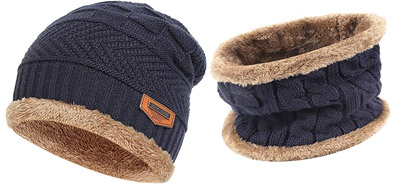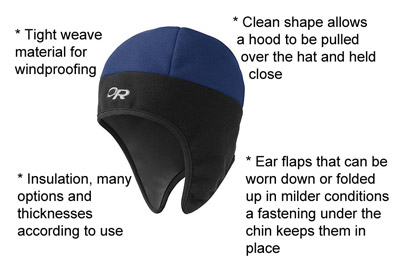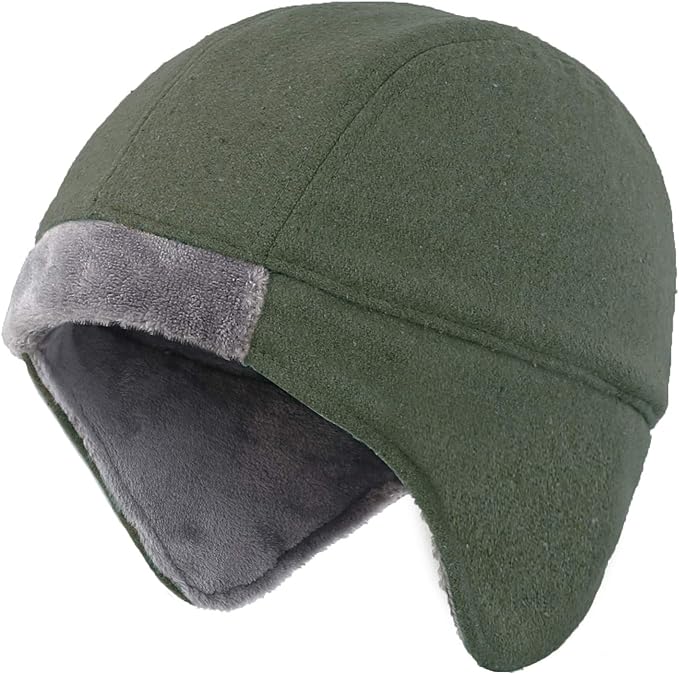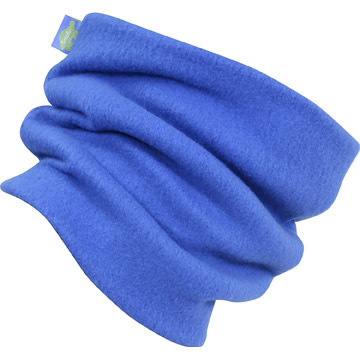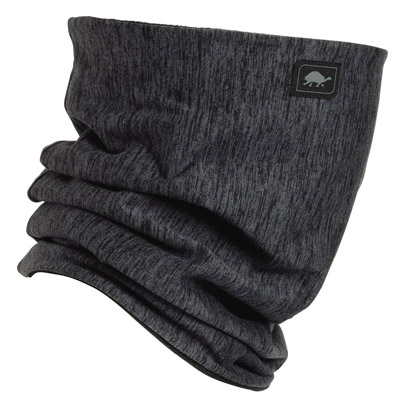Winter Hats and Balaclavas, Headgear for Cold Weather
When your feet are cold, cover your head
Inuit saying
![]() This is the US page |
Go to UK page
This is the US page |
Go to UK page
![]()
Your brain is one of the most metabolically active parts of your body generating and losing heat continually, it is vital that it is kept at normal body temperature for correct function. The head acts like a radiator that can't be turned down.
Features to look for in a hat for extreme cold conditions
Putting on a hat is one of the quickest and easiest ways of keeping warm with the advantage that hats are relatively cheap and light to carry. However you are dressed putting on a hat is a simple and very effective way of warming up.
We don't really feel the cold in our head like the rest of our body (when was the last time you felt like you'd got a cold head?) so it doesn't always seem a particularly obvious thing to do. Even if you don't wear a hat all the time in cold conditions it is a good habit to carry one and put it on when you stop for a break and so stop generating heat by movement or quickly add an effective extra insulator if it gets colder.
A variety of materials are available, my personal preferences are:
1- A synthetic fleece wind stopper hat - small enough to take up very little room in a pocket with a warmth far beyond what should be reasonable for its size and weight, the flaps can be pulled down when it gets colder or folded up when not so cold. It has a layer to stop the wind in its tracks and the clean smooth shape means that a hood fits neatly over the top with no chilly gaps.
2 -
A
shearling
trapper or aviator style hat this is bulkier
than my other choices and it's for those times when
you know it's really cold and you're going to
have it on the whole time. Genuine shearling is far
more effective than faux, there is no comparison in
softness, comfort and warmth. Again a clean shape makes
a hood fit neatly over the top, I look forwards to wearing
mine when winter gets cold enough..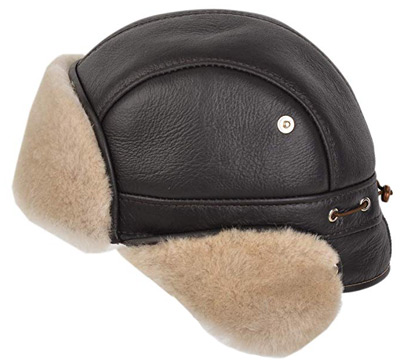
3 - A balaclava worn rolled up as a hat or rolled down as an almost full face covering under your hood. If they cover the mouth and nose, you keep that area warm too so decreasing the chances of picking up colds and flu which can get a better foot-hold in a chilled upper respiratory tract. You'll need another hat or hood too for when it gets really cold, but they aren't so expensive.
In extremely cold weather you will have a shell-garment with an attached and probably insulated hood. Hoods limit visibility and awareness of the world around you and can be quite noisy as they move against your ears. A hat allows you to keep warm with greater freedom of movement without the noise, they provide extra insulation when you do raise the hood in response to increasing wind speed and dropping temperatures.
There are an almost endless variety of hats available, all of which will help to keep you warm to some degree. The most effective are close fitting, cover the ears and preferably are without external additions such as pom-poms that prevent a close fit when a hood is pulled over them.
Materials - polyester fleece or natural materials such as wool (merino wool is premium), shearling (sheepskin) or fur are very effective and should be chosen for maximum performance.
Thinsulate - a brand name of synthetic insulation that is often found in hats and gloves. Thinsulate is effective and usually fairly inexpensive, preferable to acrylic for a similar price though less hard wearing.
Cheaper hats are often made from acrylic which provides less warmth than those materials already listed and are more bulky when stored in a pocket or backpack. This might however be an advantage if you are wearing the hat for fashion purposes as you can still wear it even though it is not so cold without over heating.
My top 3 styles:
Balaclavas
|
Windstoppers
Sheepskin
aviator
Recommended Winter Hats
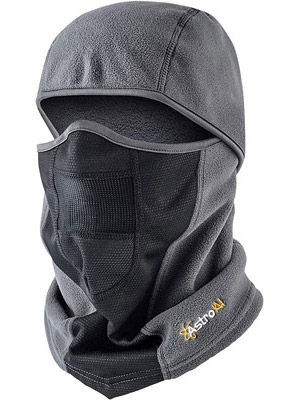 Wind-Resistant Full Face Balaclava
Wind-Resistant Full Face Balaclava
Wear
as a hat, balaclava or neck gaiter, a versatile
garment for cold protection
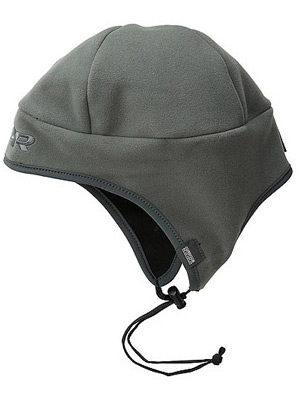 Windstopper hats
Windstopper hats
Lightweight, easily
pocketable with a warmth beyond their bulk
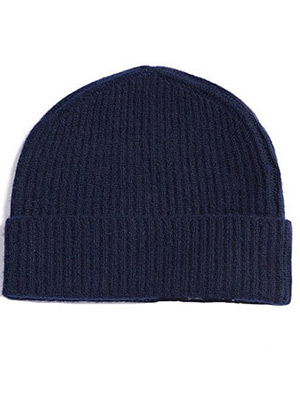 Merino Wool Beanies
Merino Wool Beanies
Wool is a superior
material for a hat, with merino being premium
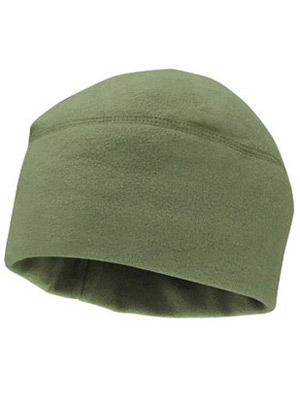 Fleece beanies
Fleece beanies
Tight weave, thinner and
lighter than other synthetics for the same warmth
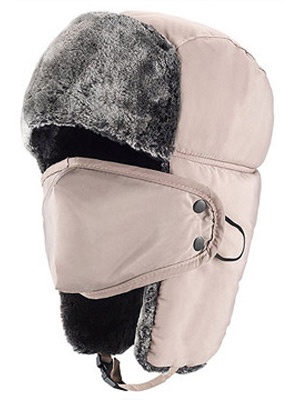
Trapper / aviator style
Cover your whole
head,
natural materials are warmer and longer
lasting
synthetics are cheaper.
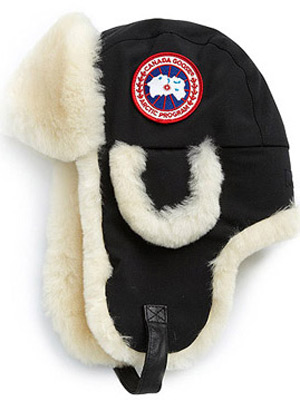
Shearling / sheepskin hats
Warm, soft
and good looking high quality hats (not the "faux")
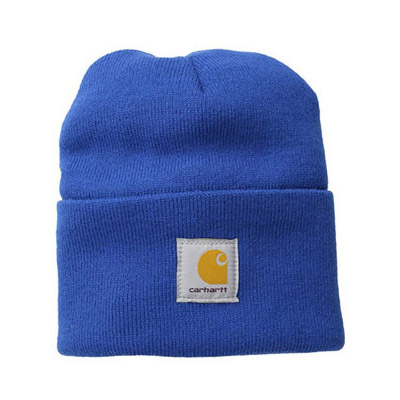 Acrylic hats
Acrylic hats
Lots of variety and generally
inexpensive,
thinsulate is a warmer material at a similar
price though less hard wearing.
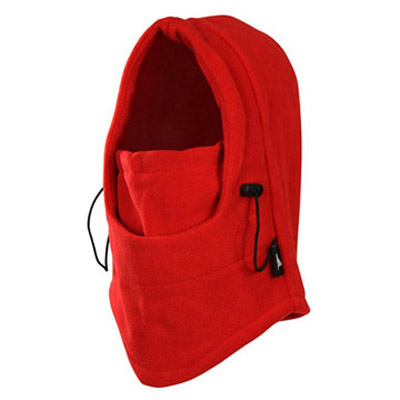 Face mask hats
Face mask hats
Balaclava / hat / hood
that covers the lower part of the face too
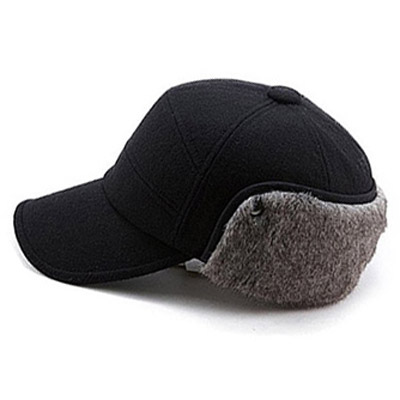 Ear flap hats
Ear flap hats
Flaps up for not so cold
conditions, flaps down for ear protection and
extra insulation when the wind starts to blow
and the temperature drops.
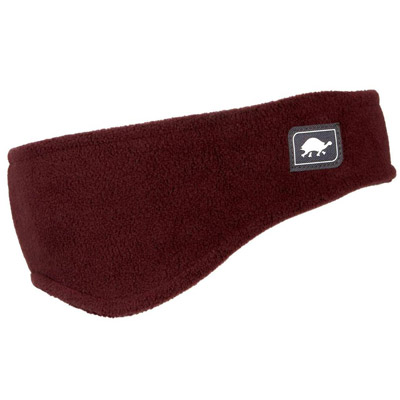 Headbands
Headbands
Ear protection and warmth,
not so hot as a hat if you're active, very
low bulk in a pocket.
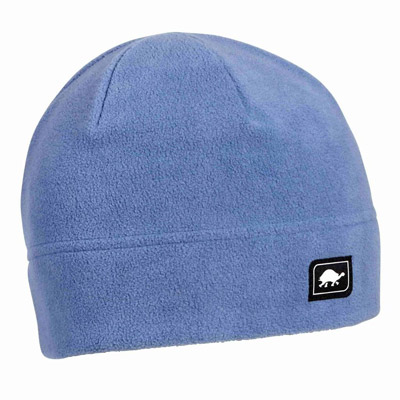 Active beanies and liners
Active beanies and liners
Low profile
for use during activity or to fit under a hood
or helmet.
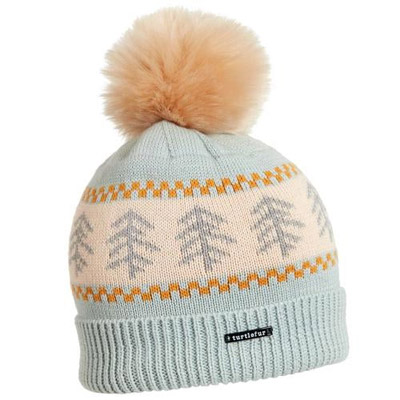 Faux fur pom hats
Faux fur pom hats
A very cute and cool way to keep warm!
A neck warmer worn in a similar manner to a scarf (but better behaved!) to cover exposed skin at the neck and also keep warm air in your shell layer and prevent it from pumping out.
Pull up over the nose in colder conditions and/or to keep snow out when it acts like a balaclava in conjunction with a hat.
Lightweight and compact, this can make a huge difference to warmth and comfort by increasing the efficiency of your shell and body insulating layers.
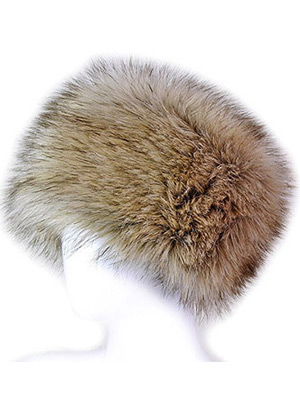 Fur hats
Fur hats
Real is much warmer, faux is
much cheaper
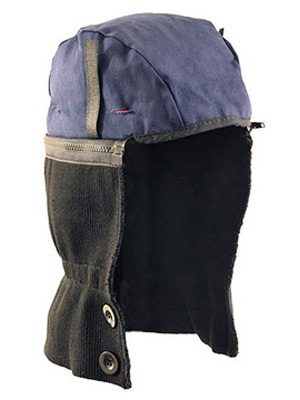 Helmet / hard hat liners
Helmet / hard hat liners
Add warmth to
your safety head gear

